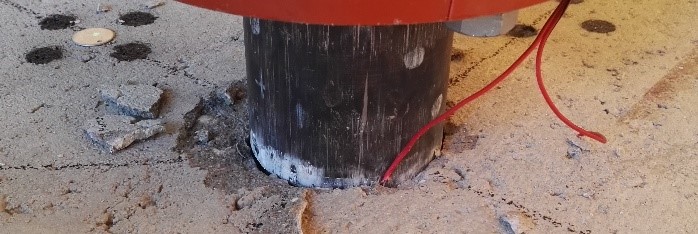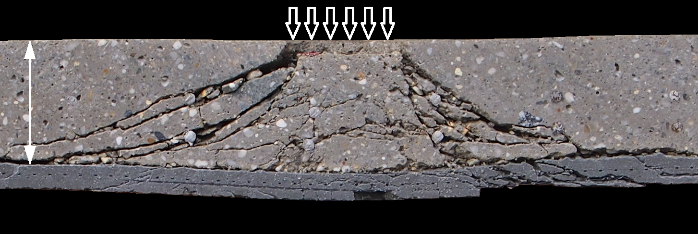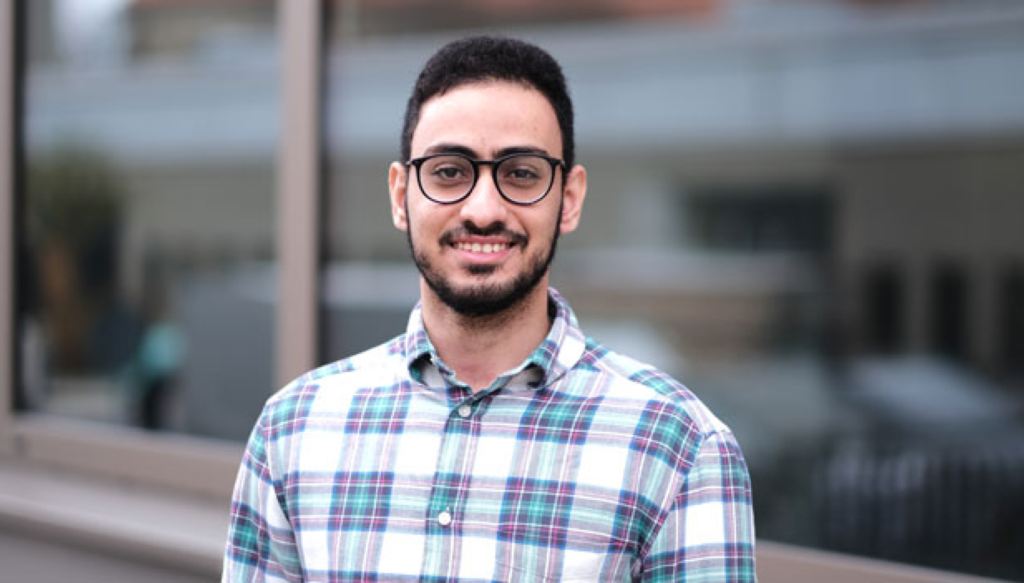Projects Overview A4/II Characterization of the shear resistance of mineral bonded composites under impact loading
A4/II Characterization of the shear resistance of mineral bonded composites under impact loading

Penetration of a steel projectile in a RC plate on the impacted side after an impact experiment in the drop tower facility.

Damage representation across the thickness of an impacted RC plate strengthened on the rear side – cut plane through the location of projectile impact, i.e. middle of the plate (lower image).
Penetration of a steel projectile in a RC plate on the impacted side after an impact experiment in the drop tower facility (left). Damage representation across the thickness of an impacted RC plate strengthened on the rear side – cut plane through the location of projectile impact, i.e. middle of the plate (right).
The image indicates that on the back side of an impacted element mainly tensile stresses occur in the strengthening layer, while on the front side punching shear type of loading may dominate.
The goal of the project is to develop and optimize testing methodologies for a reliable characterization of the shear behavior of mineral-bonded composites with short-dispersed and continuous fiber reinforcement at the composite and constituents scales, i.e., matrix, fibers and fiber-matrix bond. For this purpose dedicated testing setups shall be developed. The influence of various reinforcement configurations, geometries and materials in medium-strength and high-strength matrices shall be investigated experimentally and numerically. The findings from this research should serve as basis for the formulation and validation of material design concepts with respect to impact shear loading.
Contributors

© Tin Trong Dinh
Doctoral Researcher
(2020-2023)
Ahmed Tawfik, M.Sc.
Institute of Construction Materials
TU Dresden
Georg-Schumann-Straße 7
01187 Dresden
Germany

Principal Investigator
Univ.-Prof. Dr.-Ing. Viktor Mechtcherine
Institute of Construction Materials
Von-Mises-Bau, 3rd Floor, Room 315A Georg-Schumann-Straße 7
01187 Dresden
Germany
- Mechtcherine@tu-dresden.de
- Institute
- +49 351 463 36311
- +49 351 463 37268

in cooperation with
Univ.-Prof. Dr.-Ing. Dr.-Ing. E.h. Manfred Curbach
Institute of concrete structures
ABS, Floor 05, Room 009
August-Bebel-Straße 30/30A
01219 Dresden
Germany
- Manfred.Curbach@tu-dresden.de
- Institute
- +49 351 463 37660
- +49 351 463 37289

in cooperation with
Univ.-Prof. Dr.-Ing. habil. Michael Kaliske
Institute of Construction Materials
Von-Mises-Bau (VMB), Room 101A Georg-Schumann-Straße 7
01187 Dresden
Germany
- michael.kaliske@tu-dresden.de
- Institute
- +49 351 463 34386
- +49 351 463 37086

